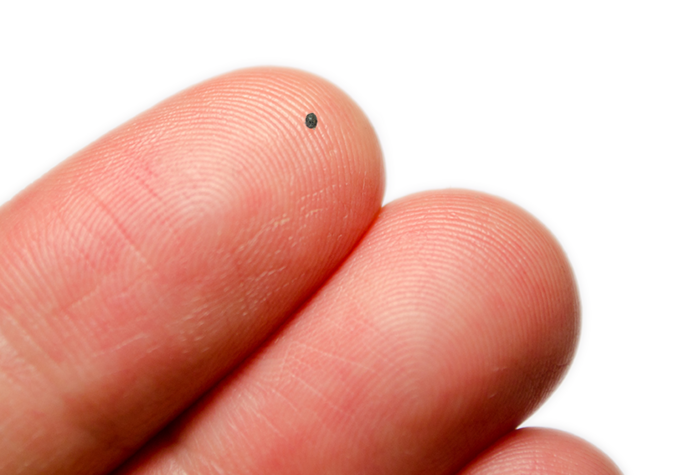One of the rarest meteorites ever seen discovered in Italy.
In fact, it is the third that contains a very rare alloy of aluminum and copper and the second with a quasicrystal of natural origin, i.e. a material considered 'impossible' because, unlike normal crystals, its structure follows patterns that never repeat.
Described in the journal Communications Earth & Environment by Italian research led by Giovanna Agrosì, professor of Mineralogy at the University of Bari, the meteorite is a tiny sphere and was discovered in Calabria, on Mount Gariglione.
A collector found it, attracted by the unusual metallic shine, who then sent it to the University of Bari. Here the analyzes confirmed the extraterrestrial origin of the sphere, currently preserved in the Museum of Earth Sciences of the University of Bari.
Researchers from the Department of Earth and Geo-Environmental Sciences of the University of Bari (Daniela Mele, Gioacchino Tempesta and Floriana Rizzo) and the Department of Earth Sciences of the University of Florence (Luca Bindi and Tiziano Catelani) collaborated with Agrosi on the study. and the Italian Space Agency, with Paola Manzari.
Bindi, in particular, discovered a quasicrystal in one of the meteorites preserved in the Natural History Museum of the University of Florence and his research made it possible to confirm that quasicrystals, the discovery of which was rewarded in 2011 with the Nobel Prize for Chemistry , they are a new type of matter in all respects.
"It was Dan Shechtman, later awarded a Nobel Prize for his discoveries in 2011, who studied their structure in the 1980s, which also makes them valuable for applications in various industrial sectors. Fifteen years ago, it was me - said Bindi - to discover that this material also existed in nature, thanks to the identification of the first quasicrystal in a sample belonging to the Khatyrka meteorite, preserved in the Natural History Museum of the University of Florence".
This second meteorite with quasicrystals discovered in Calabria was therefore thousands of kilometers from the first discovery.
"The development of planetary sciences in southern Italy is a point in which we have always believed and this discovery demonstrates how the contribution of geological-mineralogical studies is essential for the progress of knowledge about our Solar System", observed Agrosì.
For Paola Manzari, of the research and higher education coordination unit of the Matera Space Center of the ASI, "the results of this research show that there is a still unknown universe of mineralogical phases at the nanoscale in materials of extraterrestrial origin, which still manages to surprise us. The discovery of this anomalous alloy in a chondritic matrix together with the presence of quasicrystals, opens up new scenarios on the origins of the original material from which the fragment broke away and provides new elements for understanding the mechanisms of formation of the Solar System".
Also according to Giuseppe Mastronuzzi, director of the department of Earth and Geoenvironmental Sciences of the University of Bari, "the discovery is very important not only for mineralogical and planetary sciences, but for the physics and chemistry of the solid state; it demonstrates once again - he added - that quasicrystals can form spontaneously in nature and, above all, remain stable for geological times".
Reproduction reserved © Copyright ANSA

